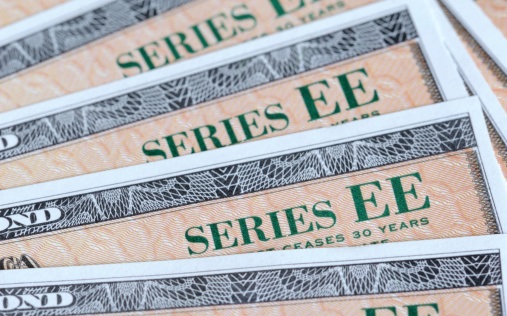Market Update
US bond markets are back in the driving seat with regards to FX, equity and commodity market price action; US bond yields have surged since midway through the Asia Pacific session, with 10-year yields now up more 8bps and back above 1.60% and 30-year yields up a similar margin and beyond 2.35%. No specific fundamental catalyst was behind the move, but needless to say it has driven upside in the US dollar, with the DXY now back in the 91.80s from yesterday’s 91.35 lows and is driving downside in global equity and commodity markets; S&P 500 futures are down 0.5%, the Stoxx 600 is down 0.6%, WTI is down 0.6%, spot gold is down over 1.0% and industrial metals are broadly also under pressure.
Note that US President Biden yesterday signed off on the $1.9T stimulus package one day earlier than expected and talk is of the $1400 stimulus cheques reaching bank accounts by the weekend. Meanwhile, as noted in yesterday’s market brief chatter regarding the next more infrastructure-focused stimulus package, that could be significantly larger, is growing – Biden is expected to speak on his plans for the touted “recovery” package today.
US fiscal stimulus optimism was touted by market commentators as behind yesterday’s rally in US equity markets which saw the S&P 500 and Dow both close at record levels and the Nasdaq 100 recover nearly 2.5%. Today, market commentators will likely suggest that the rise in yields is being driven by the same fiscal stimulus optimism, or via fears that all this stimulus will cause the US economy to “overheat”, prompting an earlier than expected Fed tightening response. Next week’s highly anticipated Fed meeting will be an opportunity for the bank to offer more clarity on how it might act to maintain accommodative financing conditions (i.e. prevent yields from rising too much) and on how much it might allow yields to rise before acting.
G10 FX
As noted, the US dollar is dominating the majority of its G10 counterparts this morning. CAD is in second place in the G10 FX performance table as loonie traders await the release of the February Labour Market report, with USDCAD at the moment happy to consolidate between 1.2540-70 parameters.
The worst G10 performer is CHF, which is down close to 0.9% on the day versus the US dollar after the reiterations from the SNB regarding the ongoing necessity of negative interest rates and FX intervention. The next worst performers are the more risk-sensitive currencies AUD, NZD and GBP; last night’s announcement from NZ PM Ardern that Auckland will be easing social distancing restrictions and is set to will move to alert level 1 have not been able to stem the tide, with NZDUSD dropping under 0.7200 and heading back towards the 0.7150 mark. Similarly, AUDUSD has reversed sharply from a brief overnight test of 0.7800 and is now back in the low-0.7700s, while GBPUSD recently sold off aggressively to break under the 1.3900 level.
January UK GDP, trade and industrial production data was in focus this morning. Starting with the former, the UK economy faired better than expected in January, with economic activity declining just 2.9% MoM versus expectations for a sharper monthly drop of closer to 5.0%. However, industrial and manufacturing production for the month made for less positive reading, the former dropping at a faster than expected MoM pace of 1.5% and the latter dropping at a greater rate of 2.3% MoM. Finally, the UK’s trade deficit was smaller than anticipated in January, coming in at £9.83B versus consensus forecasts for £12.5B. That was driven by a much smaller than anticipated trade deficit with non-EU nations of just £1.76B (expectations were for a non-EU trade deficit of nearly £5B). Note that trade with the EU was distorted by the UK’s new trading relationship with the EU and stockpiling that occurred in December out of a fear of a no deal. This morning’s data seemed not to impact GBP too much.
Elsewhere, though not the worst performers in the G10, the euro and yen are also suffering as a result of the broadly stronger US dollar, with EURUSD having slipped back from yesterday’s highs near 1.2000 to the low 1.1900s and USDJPY rallying back above the 109.00 level.
A few recent Eurozone themes are worth briefly discussing; firstly, yesterday’s ECB meeting, in which the bank signalled an increased pace of QE purchases over the coming months in order to maintain accommodative financing conditions (i.e. by not allowing European bond yields to rise too much) did not seem to deal a lasting blow to the euro and ECB sources have since been keen to communicate that yesterday’s policy move does not constitute an attempt by the ECB to increase stimulus, rather just to main current levels of stimulus.
Meanwhile, the euro has also shrugged off negative pandemic news coming out of the three largest Eurozone economies; in France, the Minister warned that the situation in Paris is particularly concerning, with the infection rate is close pre-second wave levels. Elsewhere, there is talk of a nationwide lockdown in Italy over Easter and German health officials are talking about the fact that the country might be at the start of the third wave of Covid-19.
Finally, January Eurozone Industrial Production data on Friday was strong; YoY the rate of output printed a surprise expansion of 0.1% versus expectations for a decline of 2.4%, driven by a faster than expected rate of MoM output growth of 0.8%. ING comments that they “expect industrial production to continue to provide an important counterweight to the services sector, which is still suffering from restrictive measures to curb the spread of the coronavirus… (and) while we do expect GDP to contract in 1Q, manufacturing strength will likely soften the blow”.
Day Ahead
The main event of the session will be the above-mentioned release of the February Canadian Labour Market Report at 1330GMT/0830EDT, which is likely to stir some volatility in the loonie; the Canadian economy is expected to have added 75K jobs on the month, enough to bring the unemployment rate back to 9.2% from 9.4% in January.
US Producer Price Inflation will be released at the same time as the above, and amid increased focus on the theme of inflation as of late, is likely to garner more attention than usual. As ever, a stronger than anticipated report could trigger further upside in bond yields, which could cause an extension of some of the moves already discussed in the market update section.
Focus will then be on the University of Michigan’s preliminary Consumer Confidence report for the month of March; headline Consumer Sentiment is seen rising to 78.5 from 76.8 in February, while the Consumer Expectations and Current Conditions indices are also seen rising, reflecting the better health and outlook of US citizens as the economy reopens and vaccines are rolled out more rapidly than expected.




